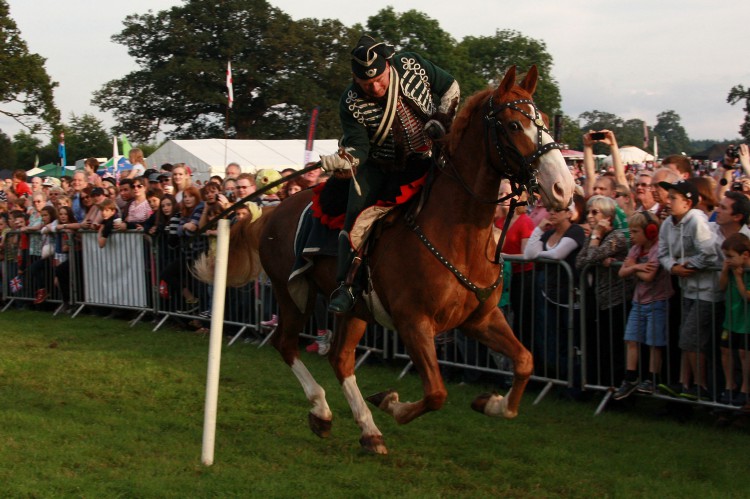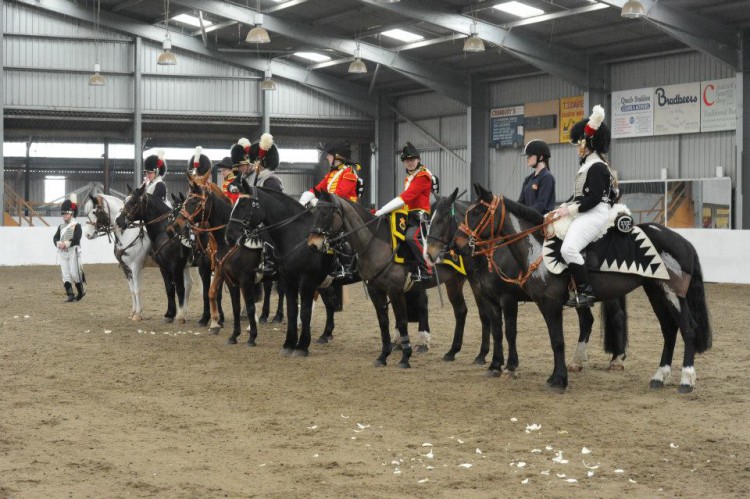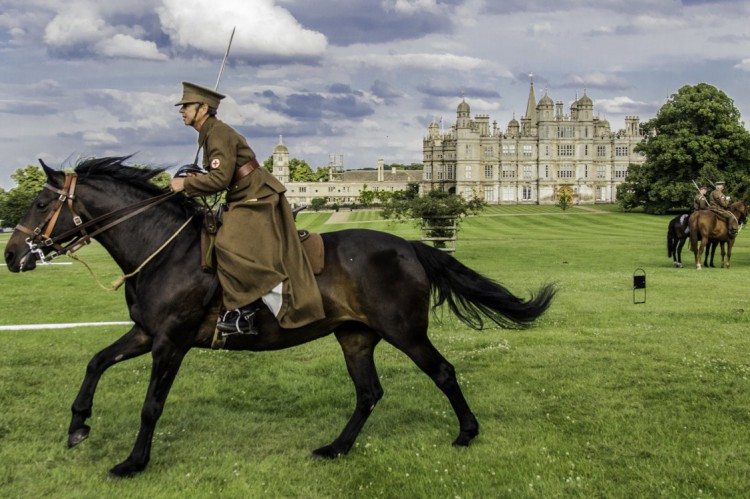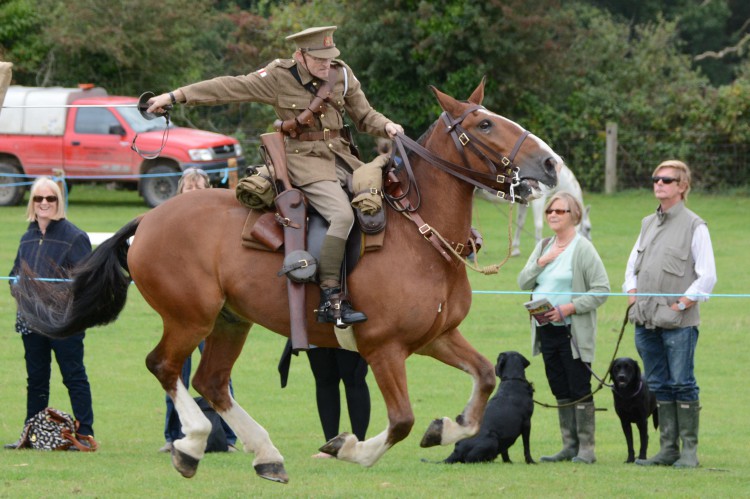Sussex Yeomanry is developing the sport of mounted skill-at-arms with a view to demonstrating the type of disciplines that could have been used for the purpose of developing the equestrian skills of the cavalry.
Several disciplines may be included in our demonstrations. An illustrative list (which is not exhaustive as it is constantly being developed) is set out below.
- Tentpegging. This is the best known discipline which involves removing a three inch wide tentpeg from the ground with a sword or lance. Displays may include a number of variations of this such as, e.g.:-
- Individual pegging – riders running independently of each other.
- Half Section – two riders running as a pair
- Section – three or four riders running together as a team, picking up either ordinary pegs or streamers (pegs with ribbons attached)
- Indian File – three or four riders running one behind the other picking up pegs in quick succession.
- Rings on Cabbages. Riders independently ride past (at the speed of canter) and take a ring from each of two cabbages, with a sword.
- Cabbages. Riders independently ride past (at the speed of canter) – and cut – each of two cabbages, with a sword.
- Jump (x 2) and Upright Dummies. Riders jump the first fence, ‘attack’ a dummy on the right (with a sword), jump the second fence and ‘attack’ a dummy on the left, leaving the sword in the dummy.
- Jump (x 2) and Balloons. Riders a) jump the first fence and simultaneously burst a balloon to the right (with a bayonet or pricker), b) burst a balloon to the right mid-way between the two jumps and c) jump the second fence and simultaneously burst a balloon to the left.
- Jump (x 2) and Dummies on the Ground. Riders jump each of two fences and ‘attack’ a dummy on the ground (with a lance) that is immediately behind each jump.
- Jump, Dummy on the Ground, Jump, Peg. Riders a) jump the first fence and ‘attack’ a dummy on the ground (with a lance) that is immediately behind the jump, b) jump the second fence and c) take a peg that is placed in the ground at a set distance after the jump.
- Dummies on the Ground. Riders ‘attack’ each of four dummies on the ground (with a lance) – the first with the butt to the right, the second with the butt to the left, the third with the tip to the right and the fourth with the tip to the left.
The exact format of each display will depend on the size and condition of the arena that is to be used.
Sussex Yeomanry in Association with the Royal Logistic Corps Coaching Board is available to put on a display that is entitled “Horses in War”. For general information about this display please follow this link, RLC and Sussex Yeomanry Horses in War Display Detail
Sussex Yeomanry is actively looking for potential venues within the UK, both as part of the Horses in War display referred to above and as stand alone displays, to demonstrate the cavalry skills of its members.
For further information please Contact Us




